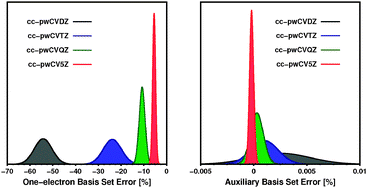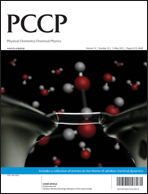Auxiliary basis sets for density-fitted correlated wavefunction calculations: weighted core-valence and ECP basis sets for post-d elements†
Abstract
We report optimised auxiliary basis sets for the resolution-of-the-identity (or density-fitting) approximation of two-electron integrals in second-order Møller–Plesset perturbation theory (MP2) and similar electronic structure calculations with correlation-consistent basis sets for the post-d elements Ga–Kr, In–Xe, and Tl–Rn. The auxiliary basis sets are optimised such that the density-fitting error is negligible compared to the one-electron basis set error. To check to which extent this criterion is fulfilled we estimated for a test set of 80 molecules the basis set limit of the correlation energy at the MP2 level and evaluated the remaining density-fitting and the one-electron basis set errors. The resulting auxiliary basis sets are only 2–6 times larger than the corresponding one-electron basis sets and lead in MP2 calculations to speed-ups of the integral evaluation by one to three orders of magnitude. The density-fitting errors in the correlation energy are at least hundred times smaller than the one-electron basis set error, i.e. in the order of only 1–100 μH per atom.


 Please wait while we load your content...
Please wait while we load your content...